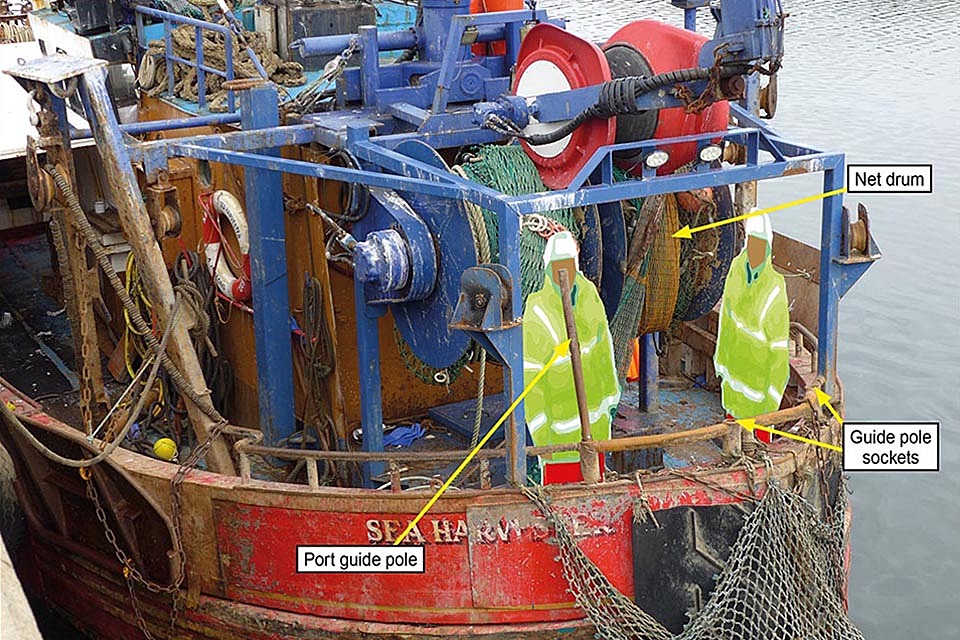Safety flyer to the fishing industry - Sea Harvester
Published 6 July 2017
1. Summary
Fishing vessel Sea Harvester (N822) serious injury to a deckhand on 3 August 2016
2. Narrative
On 3 August 2016, the 19m twin rig trawler Sea Harvester came ‘fast’ on a seabed obstruction while trawling for prawns in the Firth of Clyde, Scotland. During the attempt to retrieve the snagged fishing gear onto the net drum, the tension in one of the bridles, in conjunction with the vessel’s motion in the moderate seas, bent a guiding-on pole on the stern bulwarks (Figure 1) and forced it from its socket. The pole struck a deckhand on the side of his head and knocked him unconscious. The deckhand was transferred to hospital by helicopter. He suffered serious, life-changing injuries (Figure 2) and will require medical care for the foreseeable future.

Figure 1: Aft deck area showing approximate positions of deckhands

Medical imagery showing extent of head injuries
3. Safety lessons
-
Fasteners are an occupational hazard for fishermen and the recovery of snagged gear is a frequent occurrence. However, circumstances vary and test the skills and knowledge of skippers and their crews. They also sometimes require a degree of improvisation. However, using deck equipment for purposes for which it is not intended carries its own risks. Guiding-on poles are designed to ensure that trawls are evenly recovered onto the net drum. They do not usually have the same strength as fairleads or blocks and should not be used as such.
-
Knowing where to stand on working decks with limited space is a significant factor in staying safe. Ropes and wires can part, while blocks and winches and other deck equipment can fail. The forces involved and the energy released when this happens can be phenomenal. It doesn’t happen very often, but when it does it is frequently without warning.
-
Safety helmets are not routinely worn by fishermen, even when shooting or hauling. However, the risks of head injuries from wires or ropes under tension and overhead loads are no less than in other industries in which safety helmets must be worn. In this case, the degree of protection that would have been afforded had the deckhand worn a helmet is uncertain. Nonetheless, some protection, no matter how limited, could have reduced the severity of the life-changing injuries he sustained.
Our accident investigation report is available at: https://www.gov.uk/maib-reports/accident-on-the-twin-rig-prawn-trawler-sea-harvester-with-1-person-seriously-injured
For all general enquiries:
Marine Accident Investigation Branch
First Floor, Spring Place
105 Commercial Road
Southampton
SO15 1GH
Email iso@maib.gov.uk
Enquiries during office hours +44 (0)23 8039 5500

